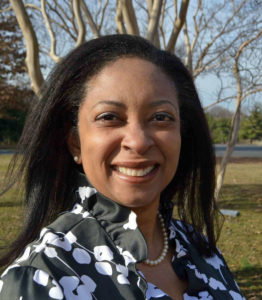 Ed Talk is a biweekly opinion column. The views expressed are solely the author’s.
Ed Talk is a biweekly opinion column. The views expressed are solely the author’s.
October is Dyslexia Awareness Month. Dyslexia impacts 1 in 5 people, or 20% of the population. In APS, that would equate to over 5,000 students.
According to the International Dyslexia Association (IDA), “Dyslexia is a “specific learning disability that is neurobiological in origin. It is characterized by difficulties with accurate and/or fluent word recognition and by poor spelling and decoding abilities. These difficulties typically result from a deficit in the phonological component of language that is often unexpected in relation to other cognitive abilities and the provision of effective classroom instruction. Secondary consequences may include problems in reading comprehension and reduced reading experience that can impede growth of vocabulary and background knowledge.”
Students with dyslexia need to learn to read with Structured Literacy, which involves phonology (the study of sounds in spoken words); sound-symbol/orthography (how to map sounds/phonemes to letters/graphemes); syllables (knowing the types of syllables and how to divide words into syllables; morphology (the study of base words and affixes –prefixes and suffixes); syntax (understanding the grammatical order of words, like sentence structure); and semantics (understanding the meaning of words and sentences). One notable structured literacy approach is Orton-Gillingham (O-G). Structured Literacy is critical for students with dyslexia, and is advantageous for all other readers.
Dyslexic students have tremendous difficulty learning to read using Balanced Literacy, where students are encouraged to use word analogies and pictures or context to identify words. Balanced Literacy instruction is focused on shared reading (e.g., the teacher reads aloud to students and asks questions about the text), guided reading (e.g., students read texts at their current ability level and discuss them with the teacher in homogeneous groups), and independent reading (e.g., students self-select books to read on their own). However, consecutive years of overall declining reading declines in APS indicates that Balanced Literacy isn’t working all that well for students who aren’t dyslexic. We should be teaching the students in the margins because a rising tide lifts all boats.
After years of parent advocacy, a 2016 Dyslexia Consultant Report, and a 2020 NAACP Education Committee letter, APS has finally agreed to transition to Structured Literacy for K-5. However, the rollout is slow and still entangled with the Balance Literacy until APS goes through a resource adoption process. It is noteworthy that the widely used Balanced Literacy curriculum, Lucy Calkins Units of Study, received an Ed Reports failing review, for not meeting expectations for text quality and complexity in grades K-8. So why is APS clinging to this garbage while students continue to languish?
Literacy is a civil right and is the foundation for all other learning. As such, the transition to Structured Literacy must occur with all deliberate speed. It should also occur simultaneously at the secondary level for Tier 3 reading intervention, which APS has not committed to do. As a result, students who have been promoted upwards without ever having gained strong foundational reading skills are struggling epically and are on track to graduate illiterate.
The amount of resources in time, personnel, and money needed to remediate dyslexia at the secondary level is astronomical. The emotional and psychological toll on the student is unquantifiable, making school untenable. The cost to the community in crime, poverty, and generational impact is immeasurable. APS can’t afford to further delay early screening, intervention and teacher training aligned to the Science of Reading.
From 2015-2019, the Marysville Exempted Village School District (MEVSD) in Ohio shifted its foundational reading programs, curriculum, staffing, and Multi-Tiered Systems of Support (MTSS) to a diagnostic prescriptive approach aligned to evidence based practices in the screening, diagnosis, and treatment of language based reading disorders (such as dyslexia) from K-2. MEVSD ensured equitable access to Structured Literacy for all students based on social-emotional wellness of its students and community–not narrowly based on reading, and financed the shift with a 25 year cost savings of $18,954,434 (based on an aggressive MTSS model). See Dyslexia Roadmap Guide for School Districts.
This is the type of visionary lens APS needs; to embrace the sustainability of investing money up front in order to save a lot more down the road. Doing so would pay huge dividends for our students and community. The cost benefit analysis of continually kicking the can down the road is bigger deficits each year. What will it take for the school board to abandon its practice of being pennywise and pound foolish?
Symone Walker is a federal attorney and an APS parent. She is Vice President of the Arlington Special Education Advisory Committee (ASEAC), serves on the Commonwealth Attorney’s Community Advisory Board, and is an Executive Committee Member of the Arlington NAACP and Co-Chair of the NAACP Education Committee. Symone is a former candidate for the Arlington school board.

